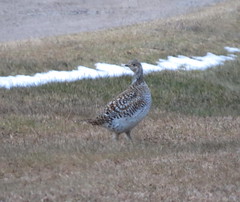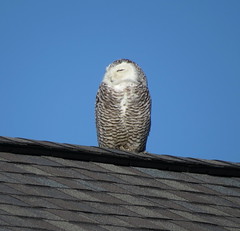The Sedge Wren ( Cistothorus platensis ) are erratic visitors during the summer, however it’s during autumn when you chances go up spotting this skulking visitor. Found in sedge marshes and wet meadows, this small ( 4.5″ ) skulker is always a challenge to locate. Distinguished from the Marsh Wren ( Cistothorus palustris ) by a small, short bill, while the Marsh Wren is darker in color and more contrast overall, with a solid brown crown, with a longer curved bill. The two birds can easily be misidentified unless field markings aren’t looked at closely
Yesterday Jon and myself were off to Ellis Lake to track down the LeConte’s Sparrow that’s been seen there for the past several days. We hikes off to a lone patch of stunted Willow trees situated along a low channel that runs the length of a sizable field that splits everything into two. Normally this would be impassable to foot traffic, however during this dry spell we’ve had we were able to walk all the way the Willow stand.
Despite working the area for more than two hours, we never came across the LeConte’s Sparrow, however it was a 8 sparrow day with both Nelson’s Sharp-tailed and Lincoln’s being sighted. Besides the Lincoln and Nelson’s, another treat for the day was the Sedge Wren that we saw several times, usually in the Willow Stand. Always moving and never giving me a clear shot, I was able to click of a couple of acceptable photographs.






